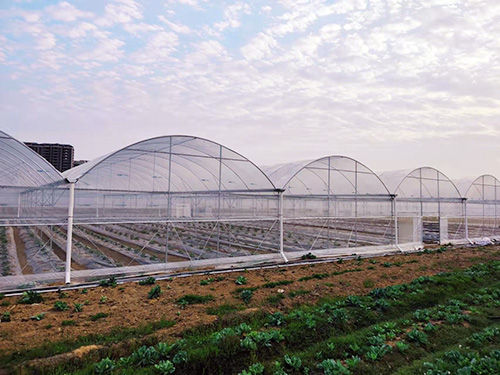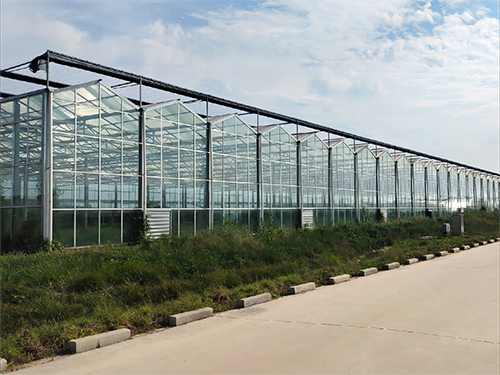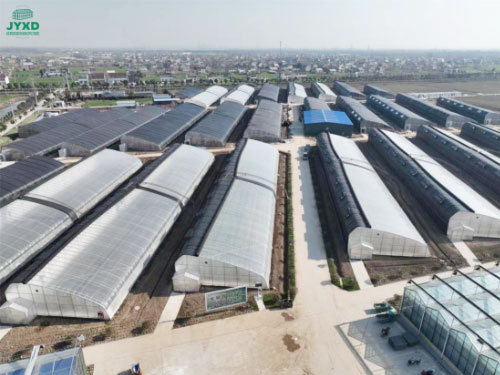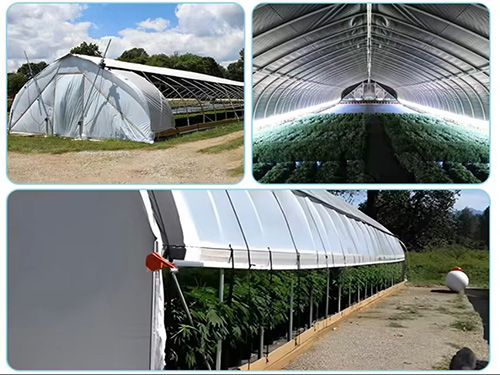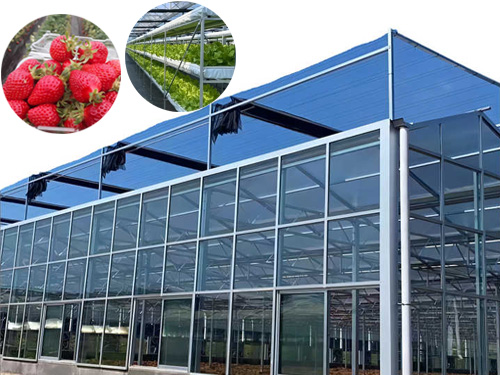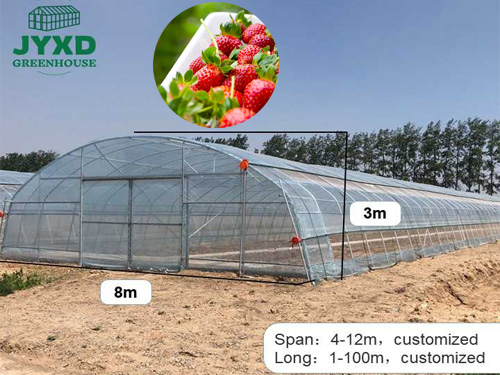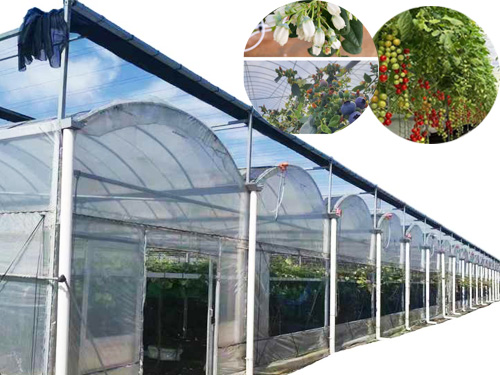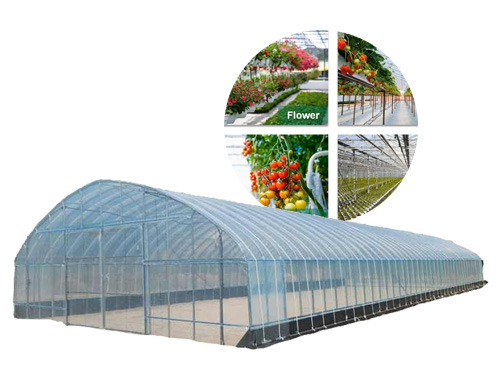NEWS DETAILS
NEWS INFORMATION
Best Greenhouse Setup for Growing Vegetables
AUTHOR:jyxd-greenhouse DATE:2024-08-23 15:39:58 HITS:149
Growing vegetables in a home greenhouse not only provides fresh and healthy ingredients but also allows you to enjoy gardening year-round. However, a well-thought-out greenhouse setup is crucial for successful vegetable cultivation. Here’s a comprehensive guide to setting up the best greenhouse environment for growing vegetables:
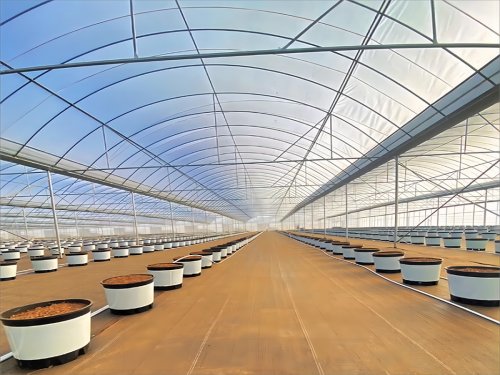
1. Choose the Right Greenhouse Type
Selecting the appropriate greenhouse type depends on your budget, space, and climate.
Freestanding Greenhouses: Ideal for those with ample space, freestanding greenhouse s offer a flexible layout and are suitable for growing a variety of vegetables. They provide an optimal growing environment with good air circulation and light exposure.
Lean-to Greenhouses: If space is limited, a lean-to greenhouse is a great option. Utilizing an existing wall as part of the greenhouse saves on construction costs and benefits from the wall’s insulation properties.
Small Portable Greenhouses: Perfect for beginners or those with limited space, small portable greenhouse s are easy to move and manage. They are suitable for growing basic vegetables and can be relocated as needed.
Tip: Choose a greenhouse type that matches your space and planting needs to ensure adequate light and air circulation.
2. Optimize Greenhouse Interior Layout
A well-planned greenhouse layout can enhance planting efficiency and increase vegetable yields.
Zoning: Divide the greenhouse into sections based on the types and growth habits of vegetables. For example, leafy greens can be grouped together, while space-consuming fruiting vegetables can be placed in another area.
Vertical Gardening: Make use of vertical space by installing shelves, hanging baskets, or trellises to grow smaller vegetables like strawberries, lettuce, and herbs. This increases your growing area without requiring additional floor space.
Plant Beds and Walkways: Ensure plant beds are of appropriate width and leave enough space for walkways to facilitate daily maintenance and harvesting. Cover walkways with gravel or weed fabric to minimize weed growth and keep the greenhouse tidy.
Tip: Plan your greenhouse layout in advance to ensure adequate space for each type of vegetable and ease of access for maintenance.
3. Manage Light and Temperature
Light and temperature are critical factors for vegetable growth. Proper management of these elements impacts growth speed and quality.
Natural Light: Place the greenhouse in a location with maximum sunlight, ideally south-facing, to take advantage of natural light. Use high-transparency materials like glass or polycarbonate for better light transmission.
Artificial Lighting: In regions with insufficient sunlight or during shorter winter days, use LED grow lights to supplement natural light and ensure adequate photosynthesis.
Temperature Control: Use vents, fans, or heaters to regulate the greenhouse temperature. Most vegetables grow best in temperatures between 18°C and 24°C. Automatic temperature and light control systems can enhance efficiency and maintain optimal conditions.
Tip: Invest in automatic temperature and light adjustment systems to improve greenhouse management and ensure the best environment for vegetable growth.
4. Control Irrigation and Humidity
Effective irrigation and humidity control are crucial for healthy vegetable growth in the greenhouse .
Automatic Drip Irrigation: Install an automatic drip irrigation system to precisely control water delivery to each plant, preventing overwatering or underwatering. Drip irrigation is water-efficient and economical.
Rainwater Harvesting: Set up a rainwater collection system to gather natural precipitation for greenhouse watering. This eco-friendly method reduces water costs.
Humidity Control: Maintain appropriate humidity levels to prevent disease and promote plant health. Use humidifiers or dehumidifiers to adjust humidity based on seasonal changes and vegetable types.
Tip: Regularly check soil moisture and adjust irrigation frequency based on weather conditions to ensure vegetables receive adequate water.
5. Manage Nutrition and Soil
Good soil conditions and adequate nutrition are fundamental for a successful vegetable harvest.
Quality Soil: Choose soil that is suitable for vegetable growth, ensuring good drainage and aeration. Mix your own soil with compost, peat, and perlite to improve soil structure.
Regular Fertilization: Apply organic or slow-release fertilizers based on vegetable growth stages. Leafy vegetables typically need more nitrogen, while fruiting vegetables require higher phosphorus and potassium.
Soil Rotation: Practice soil rotation to prevent nutrient depletion and reduce the risk of pests and diseases.
Tip: Perform soil tests at the end of each season to adjust nutrient levels for the next crop cycle, ensuring healthy growth.
Conclusion
By choosing the right greenhouse type, optimizing the interior layout, managing light and temperature, controlling irrigation and humidity, and maintaining proper nutrition and soil conditions, you can create an ideal environment for growing vegetables. These practices not only improve planting efficiency but also help save time and resources.
Whether you’re a beginner or an experienced gardener, these greenhouse setup tips will help you successfully grow healthy, delicious vegetables at home. Start designing your greenhouse vegetable garden today and enjoy fresh, home-grown produce year-round!
Hebei Juyou Xinda Greenhouse Facilities Co.,Ltd.
Copyright © 2024-2025 https://www.jyxd-greenhouse.com. All Rights Reserved Hebei Juyou Xinda Greenhouse Facilities Co.,Ltd.Copyright





 Current Location:
Current Location: